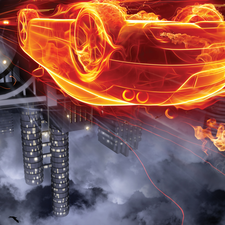Darktable 1.2 RAW converter
Into the Dark

© Lead Image © Mischa, Fotolia.com
Darktable shines as the most powerful free RAW converter, with impressive new features in the current version 1.2.
RAW converters generate normal bitmap files from digital negatives. One of the most powerful representatives of this genus is Darktable [1]. The free program (see the "Installing Darktable" box), which is strongly oriented on the commercial Adobe Lightroom relies on a fixed workflow that guarantees reproducible results. It implements non-destructive image editing; although it loads the original files ("negatives"), it always creates separate output files ("positives" or "prints") with the settings you have chosen. Darktable writes these settings – as well as keywords, geospatial information, and other data for the image – to so-called "sidecar files" with a suffix of .xmp.
The program interface takes some getting used to and consists of four different parts in the current version 1.2 [2]. Besides a light table for file management, there is a darkroom for photo editing, tethering for triggering of cameras, and a map for geotagging images.
Darktable basically divides the window into three vertical panes with two broad sidebars that frame the image window. In the bar on the left-hand side, you usually find management information, whereas the bar on the right displays information and actions for the selected shots viewed in the image window. Clicking the small outward-pointing triangles in the panels hides them temporarily and enlarges the image window.
[...]
Buy this article as PDF
(incl. VAT)
Buy Linux Magazine
Subscribe to our Linux Newsletters
Find Linux and Open Source Jobs
Subscribe to our ADMIN Newsletters
Support Our Work
Linux Magazine content is made possible with support from readers like you. Please consider contributing when you’ve found an article to be beneficial.

News
-
Manjaro 26.0 Primary Desktop Environments Default to Wayland
If you want to stick with X.Org, you'll be limited to the desktop environments you can choose.
-
Mozilla Plans to AI-ify Firefox
With a new CEO in control, Mozilla is doubling down on a strategy of trust, all the while leaning into AI.
-
Gnome Says No to AI-Generated Extensions
If you're a developer wanting to create a new Gnome extension, you'd best set aside that AI code generator, because the extension team will have none of that.
-
Parrot OS Switches to KDE Plasma Desktop
Yet another distro is making the move to the KDE Plasma desktop.
-
TUXEDO Announces Gemini 17
TUXEDO Computers has released the fourth generation of its Gemini laptop with plenty of updates.
-
Two New Distros Adopt Enlightenment
MX Moksha and AV Linux 25 join ranks with Bodhi Linux and embrace the Enlightenment desktop.
-
Solus Linux 4.8 Removes Python 2
Solus Linux 4.8 has been released with the latest Linux kernel, updated desktops, and a key removal.
-
Zorin OS 18 Hits over a Million Downloads
If you doubt Linux isn't gaining popularity, you only have to look at Zorin OS's download numbers.
-
TUXEDO Computers Scraps Snapdragon X1E-Based Laptop
Due to issues with a Snapdragon CPU, TUXEDO Computers has cancelled its plans to release a laptop based on this elite hardware.
-
Debian Unleashes Debian Libre Live
Debian Libre Live keeps your machine free of proprietary software.

